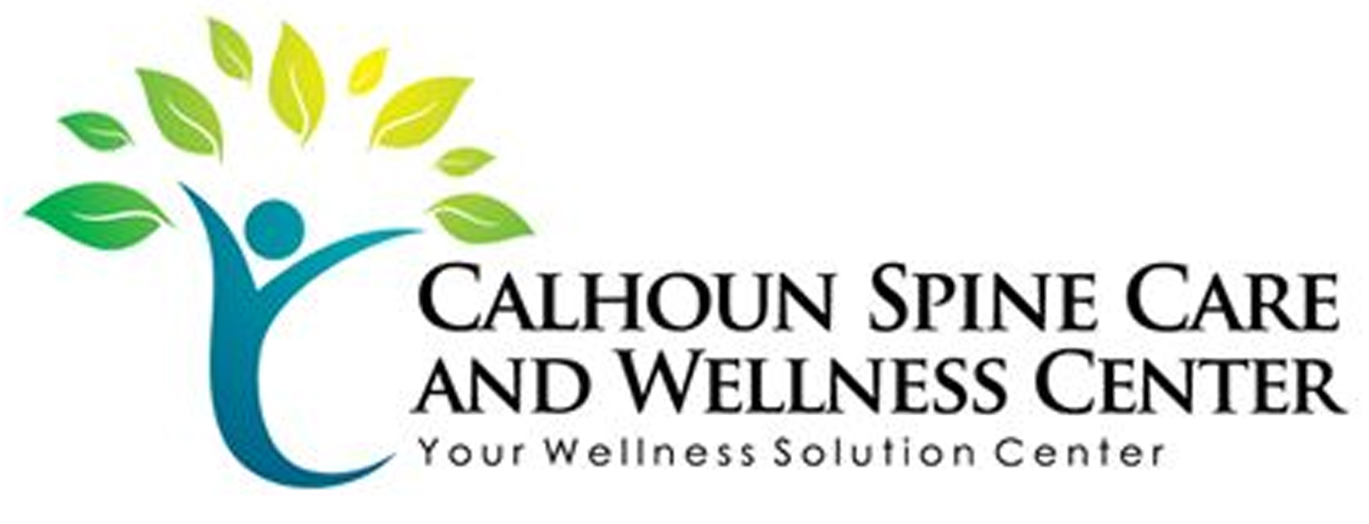When you're dealing with persistent pain, finding effective relief can feel overwhelming. You might not realize that simple, natural methods can often provide significant comfort without the side effects of medication. By incorporating herbal remedies, practicing mindfulness, and engaging in physical activities, you can create a holistic approach to your well-being. But there are more strategies you might not have considered that could make a real difference. Curious about how these methods can work together to enhance your daily life?
Herbal Remedies
Exploring herbal remedies can offer you a natural alternative for pain relief. Many people seek these options due to their effectiveness and fewer side effects compared to conventional medications. You might find that certain herbs can alleviate discomfort and promote overall well-being.
One popular option is ginger. Known for its anti-inflammatory properties, ginger can help reduce pain associated with arthritis and muscle soreness. You can easily incorporate fresh ginger into your diet by brewing it in tea or adding it to meals.
Turmeric is another powerful herb you shouldn't overlook. Curcumin, the active compound in turmeric, has significant anti-inflammatory and antioxidant effects. You could mix turmeric powder into smoothies, soups, or even warm milk for added benefits.
Willow bark is often referred to as "nature's aspirin." It contains salicin, which can relieve pain and reduce inflammation. You can find willow bark in teas or capsule forms, making it simple to include in your routine.
Peppermint is also effective for headaches and muscle tension. You can use peppermint oil for topical application or simply inhale its aroma to help ease your discomfort.
Lastly, consider boswellia, an herb known for its ability to fight inflammation. It's available in capsule form and can be beneficial for chronic pain conditions.
Incorporating these herbal remedies into your life can provide you with a natural, effective approach to managing pain. Always consult your healthcare provider before starting any new herbal regimen, especially if you're on other medications.
Mindfulness and Meditation
Mindfulness and meditation can be powerful tools in managing pain.
By practicing breathing techniques, engaging in guided visualization, or using body scan meditation, you can learn to shift your focus and reduce discomfort.
These methods not only promote relaxation but also help you gain a deeper understanding of your body's sensations.
Breathing Techniques
While you mightn't realize it, your breath serves as a powerful tool for managing pain through mindfulness and meditation techniques. By focusing on your breath, you can create a sense of calm that helps reduce discomfort.
Here are some effective breathing techniques to contemplate:
- Deep Belly Breathing: Picture your abdomen rising and falling like gentle waves, inviting relaxation with each breath.
- 4-7-8 Breathing: Inhale for four seconds, hold for seven, then exhale for eight, as if you're letting go of tension with every out-breath.
- Box Breathing: Imagine drawing a box in the air as you breathe in, hold, breathe out, and hold again, creating a rhythm that stabilizes your mind.
- Nasal Breathing: Feel the cool air entering your nostrils and warming your lungs, grounding you in the present moment.
- Visualization Breathing: As you breathe out, envision pain dissolving like mist in the morning sun, making room for peace and tranquility.
Incorporating these techniques into your daily routine not only aids in pain management but also enhances your overall well-being.
Guided Visualization Practices
Building on the calming effects of breathing techniques, guided visualization practices can further enhance your pain management journey. This method invites you to create mental images that promote relaxation and reduce discomfort. By focusing on specific, positive scenarios, you can shift your attention away from pain and cultivate a sense of well-being.
To practice guided visualization, find a quiet space where you won't be disturbed. Close your eyes and take a few deep breaths, grounding yourself in the moment. Then, imagine a peaceful scene—perhaps a serene beach or a lush forest. Engage your senses: hear the waves, feel the sun on your skin, or smell the fresh pine. Allow yourself to be fully immersed in this visualization.
You can even use recorded guided sessions, which often include soothing narrations and background music. These sessions can help you stay focused and relax more deeply.
As you practice regularly, you may find that you're better equipped to manage pain and stress. Remember, the key is consistency. With time, guided visualization can become a powerful tool in your natural pain relief toolkit.
Body Scan Meditation
Embracing the practice of body scan meditation can greatly enhance your awareness of physical sensations and promote relaxation. This technique involves mentally scanning your body from head to toe, allowing you to notice areas of tension or discomfort.
As you practice, you'll cultivate a deeper connection with your body, helping to alleviate pain and stress.
To get started, find a comfortable position—lying down or sitting—and close your eyes. Focus on your breath, letting each inhale and exhale guide you into a state of calm.
Then, begin your scan:
- Feel the gentle rise and fall of your chest with every breath.
- Notice the warmth of the sun on your skin or the softness of a blanket.
- Acknowledge the tension in your shoulders, then consciously let it go.
- Sense the weight of your legs resting on the ground, grounding you.
- Imagine a wave of relaxation flowing through each part of your body.
Physical Activity and Exercise
Engaging in regular physical activity can considerably reduce pain and enhance your overall well-being. When you incorporate exercise into your routine, you release endorphins, which are natural painkillers that boost your mood and promote a sense of well-being.
Whether it's walking, swimming, or doing yoga, finding an activity you enjoy makes it easier to stick with it. You don't need to jump into high-intensity workouts. Start with gentle exercises, especially if you're dealing with chronic pain.
Aim for activities that increase your heart rate without causing discomfort. Stretching and strength training can also help improve flexibility and muscle support, which can alleviate pain over time.
Consistency is key. Try to engage in at least 150 minutes of moderate aerobic activity each week, broken down into manageable sessions. Even short bursts of movement can contribute to your overall pain relief strategy.
Listen to your body and adjust your activities based on how you feel. If something hurts, don't hesitate to modify or try a different exercise.
Incorporating physical activity into your daily life also helps create a positive routine. Consider taking the stairs instead of the elevator or going for a brisk walk during breaks.
This not only keeps you active but also breaks up long periods of sitting, which can exacerbate pain.
Acupuncture Techniques
Although it may seem unconventional, acupuncture techniques can provide significant relief for various types of pain. This ancient practice, rooted in Traditional Chinese Medicine, involves the insertion of thin needles into specific points on the body. You might find it surprisingly effective for conditions like chronic pain, migraines, or joint discomfort.
Here's how acupuncture can benefit you:
- Targeted Relief: Needles are placed strategically to stimulate your body's natural healing processes, targeting pain directly at its source.
- Increased Energy Flow: Acupuncture aims to balance your body's energy, or Qi, reducing blockages and enhancing overall liveliness.
- Relaxation Response: The treatment encourages relaxation, helping to alleviate stress and tension that often contribute to pain.
- Improved Circulation: By promoting blood flow to the affected areas, acupuncture can aid in faster recovery and reduce inflammation.
- Holistic Approach: This technique not only addresses physical pain but can also support emotional well-being, addressing issues like anxiety or depression.
When you consider trying acupuncture, it's crucial to consult a licensed practitioner. They'll customize your treatment based on your specific needs, ensuring a safe and effective experience.
Many individuals report feeling immediate relief after their first session, while others notice gradual improvements over time. Don't hesitate to explore this complementary therapy; it might just be the natural pain relief method you've been searching for.
Essential Oils Usage
Using essential oils can be a powerful way to manage pain naturally. These concentrated plant extracts offer various therapeutic benefits, and they can be an effective part of your pain relief toolkit. When you're dealing with discomfort, certain oils may help alleviate your symptoms.
For muscle or joint pain, consider using oils like peppermint or eucalyptus. Peppermint oil has a cooling effect that can soothe sore muscles, while eucalyptus may reduce inflammation. You can dilute a few drops of these oils in a carrier oil, like coconut or olive oil, and massage the mixture into the affected area.
If you're experiencing headaches, lavender and rosemary oils can be beneficial. Lavender oil's calming properties may help reduce stress-induced headaches, while rosemary can improve circulation. You can inhale these oils directly from the bottle or use a diffuser to fill your space with soothing scents.
For a more targeted approach, try creating a pain-relief roll-on. Mix your chosen essential oils with a carrier oil in a small roller bottle. This way, you can apply it directly to the painful area whenever you need relief.
Always remember to perform a patch test before applying any essential oil to your skin to avoid allergic reactions. Additionally, consult a healthcare professional if you're pregnant, nursing, or have pre-existing conditions.
Incorporating essential oils into your pain management routine can provide a natural, effective way to ease discomfort and enhance your overall well-being.
Dietary Changes
Making dietary changes can greatly impact your pain levels and overall health. If you're struggling with chronic pain, what you eat can play a significant role in how you feel. Incorporating anti-inflammatory foods into your diet can help reduce inflammation and alleviate pain naturally. Here are some key changes that can make a difference:
- Leafy Greens: Spinach, kale, and Swiss chard are packed with antioxidants and vitamins that combat inflammation.
- Fatty Fish: Salmon, mackerel, and sardines contain omega-3 fatty acids, known for their pain-relieving properties.
- Berries: Blueberries, strawberries, and raspberries are rich in antioxidants and can help lower oxidative stress in your body.
- Nuts and Seeds: Walnuts, chia seeds, and flaxseeds are excellent sources of healthy fats and can support joint health.
- Turmeric: This vibrant spice contains curcumin, which has powerful anti-inflammatory effects and can help reduce pain.
Reducing processed foods, sugar, and refined carbohydrates can also be beneficial. These items can trigger inflammation and worsen your pain. Instead, focus on whole, nutrient-dense foods that nourish your body.
Drinking plenty of water and staying hydrated is equally essential for managing pain. By making these dietary changes, you'll not only help ease your pain but also enhance your overall well-being. Start small and gradually incorporate these foods into your meals, and you'll likely notice a positive shift in how you feel.
Heat and Cold Therapy
Heat and cold therapy are two effective methods for managing pain and promoting recovery. By understanding how to use both, you can tailor your approach to what feels best for your body.
Heat therapy is great for soothing muscle tension and increasing blood flow. When you apply heat, whether through a warm towel, heating pad, or warm bath, you're helping your muscles relax and easing stiffness. This works especially well for chronic pain conditions like arthritis or back pain.
Just make sure to avoid using heat on swollen areas, as it can worsen inflammation.
On the other hand, cold therapy is ideal for reducing inflammation and numbing sharp pain. Ice packs or cold compresses can be applied to the affected area for about 15-20 minutes at a time. This method is particularly helpful after an injury or during a flare-up of pain.
Cold therapy slows down blood flow, which can help decrease swelling and numb the pain.
It's important to listen to your body and adjust the temperature as needed. You might prefer heat for muscle aches and cold for joint pain, so experiment with both to find what works best for you.
Always remember to use a barrier, like a cloth, between the heat or ice source and your skin to prevent burns or frostbite.
Conclusion
Incorporating these natural pain relief methods into your daily routine can greatly enhance your well-being. By exploring herbal remedies, practicing mindfulness, staying active, and using techniques like acupuncture and heat therapy, you can find what works best for you. Don't forget to pay attention to your body's responses and consult with a healthcare provider when needed. With a little effort, you can take control of your pain and improve your quality of life.



